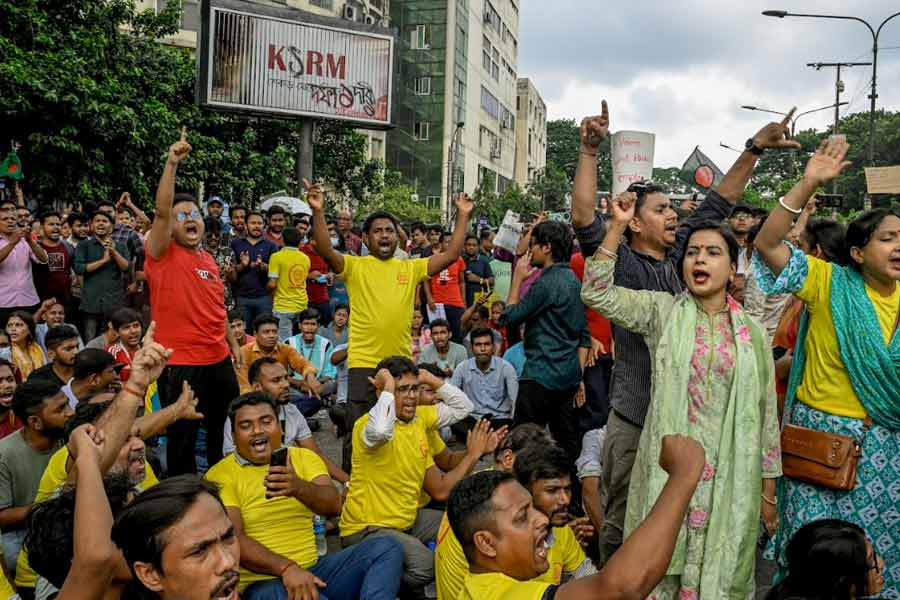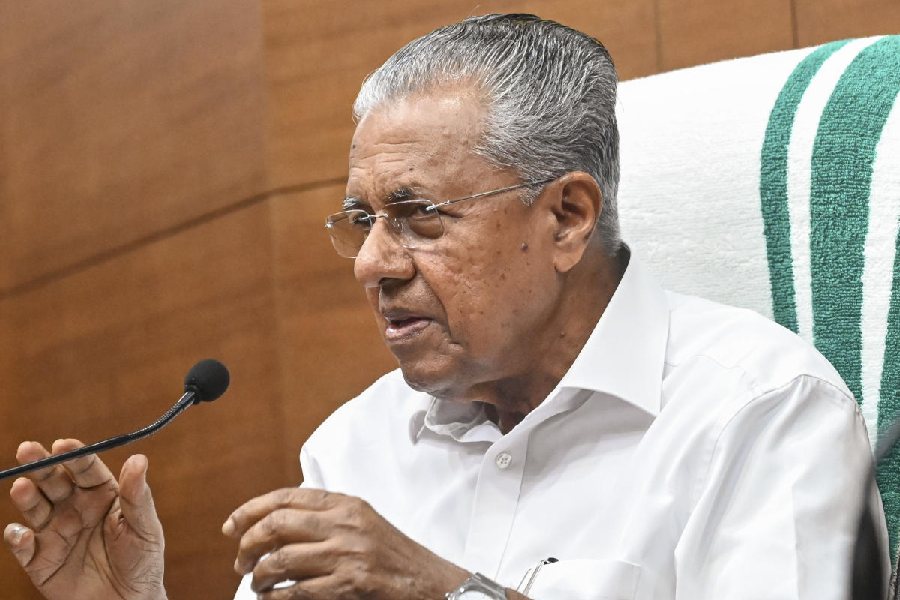The truth will out. If ignored on television, it will arrive in a trolley. That’s how Trolley Times, the voice of the farmers’ movement, came into being.
Disturbed by claims in the mainstream media, particularly news channels, about Khalistani and Maoist hands in the farmers’ protest, a group of young men had decided to set up an independent platform that could emerge as the voice of the movement.
As the farmers’ tractor trolleys had become a symbol of the protest, they instantly named their newspaper the Trolley Times.
“The farmers were fighting the corporate-backed propaganda machinery. What complicated matters was that BJP leaders and supporters jumped in to malign the movement,” Ajaypal Natt, a member of the core team of the newspaper, told The Telegraph.
“This rattled us: an honest struggle against laws clearly detrimental to farmers’ interests was being projected as a ploy by Khalistanis, terrorists and political agents. Most TV channels decided to crush the truth through this false propaganda. We thought the truth had to be told.”
Ajaypal, a physiotherapist from Punjab who expects to have lost his regular job after his unsanctioned absence of two months, said: “Some of us came together, determined to execute this plan on our own. Friends contributed and we launched the Trolley Times.”
Some 5,000 copies of the six-page newspaper, started on December 18, are printed in Hindi and Punjabi (in the Gurmukhi script), while the digital edition is published in English. An issue comes out about twice a week, and copies are distributed in eight countries by local sympathisers.
The paper is translated in eight languages by enthusiastic volunteers who see it as the “voice of people’s movement”.
“This is not the official mouthpiece of the farmers: the leadership wasn’t even in the know. The union leaders were approached much later. Now they are giving interviews to us and have started writing for us,” Ajaypal said.
“Our objective was to multiply the voices of the farmers and counter the false propaganda. We seem to have succeeded to some extent.”
Ajaypal has been at the Tikri border from the start. His entire family is at the protest — their house has been locked all this while.
Surmeet Maavi, a scriptwriter who too is part of the core team, says there is a cost to leaving one’s family back in Ropar, Punjab, to join the agitation on Delhi’s borders. But he is determined to go on.
“There are issues. There is a financial cost. But nothing is bigger than this cause,” Surmeet said.
Gurdeep Singh, a layout and design artist, too is part of the core team as are Jasdeep Singh, Mukesh and Varun Chauhan, who looks after social media.
Donation drives have yielded small sums — contrary to the wild allegations of foreign funding — that have so far sustained the 10 editions published.
The Trolley Times publishes news reports about the agitation and articles on the history of farmers’ movements and the implications of the three contentious laws, apart from interviews, poems, photographs and cartoons.
The core team members believe the experiment would not be restricted to farmers’ issues since other disgruntled segments of society, such as workers and the jobless youth, too would need their own publication to fight for their rights.
While the frustration with the mainstream media was doubtless the motivating factor behind the initiative, those associated with the Trolley Times now realise that no newspaper can provide them with the dedicated space necessary to sustain their fight against the government propaganda and disabuse people of their misconceptions.
“The Trolley Times reserves its entire space for the themes of struggle, explaining the laws and their implications, putting things in perspective, confronting falsehood and providing a platform for a national debate,” Ajaypal said.
“Experts are writing for us; voices from the field across the country are getting reflected; historical perspectives are provided. News from all (protest) points — Singhu, Tikri, Shajahanpur and Ghazipur — are carried in detail.”
Farmer leaders are providing point-by-point rebuttals of the government’s claims through the newspaper, and have also critically analysed the Supreme Court’s comment that the women agitators should go back home.
The newspaper is keeping the revolutionary spirit aflame through the poems it publishes in Hindi and Punjabi.
The latest edition had this from Gorakh Pandey: “Andhere kamron aur/ Band darwajon se/ Bahar sadak par/ Zulus mein aur/ Yuddh mein tumhare hone ke/ Din aa gaye hain (The time has come for you to step out of dark homes and closed doors and onto the road, to take part in rallies, in wars).”











